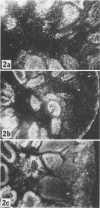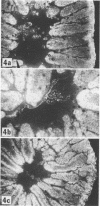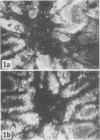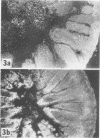Abstract
Infant mice 8 days of age were infected orally with virulent, motile, classical or El Tor strains of Vibrio cholerae and with nonmotile mutants of low virulence derived from the same strains. At intervals of 8 and 12 h postinfection, frozen thin sections of the ileum were prepared, stained with fluorescein isothiocyanate-labeled rabbit anti-vibrio antibody, and examined with the fluorescence microscope. The motile organisms were present in larger numbers, especially at 12h, and had penetrated the intervillous spaces and crypts of Lieberkuhn more completely than nonmotile vibrios. Dilution counts were made on various regions of the intestines of infant mice challenged orally 12 h previously with either motile or nonmotile strains of V. cholerae. Greater numbers of organisms were found, especially in the upper intestinal regions, when motile organisms were used. Low numbers of vibrios, limited mostly to the lumen, were seen in the ileum of infant mice infected with motile organisms when the infants were the offspring of mothers that had been immunized with crude flagellar vaccine or a vesicular preparation derived from the vibrio cell surface. The distribution of vibrios in this case was similar to that found in infected infants of unvaccinated mothers challenged with nonmotile organisms. Motility appears to enable the bacteria to better populate the upper regions of the intestinal tract and to avoid the washing effects of secretions and peristalsis. Antibacterial immunity may function, at least in part, by making it impossible for motile vibrios to accomplish this widespread distribution within the ileum.
Full text
PDF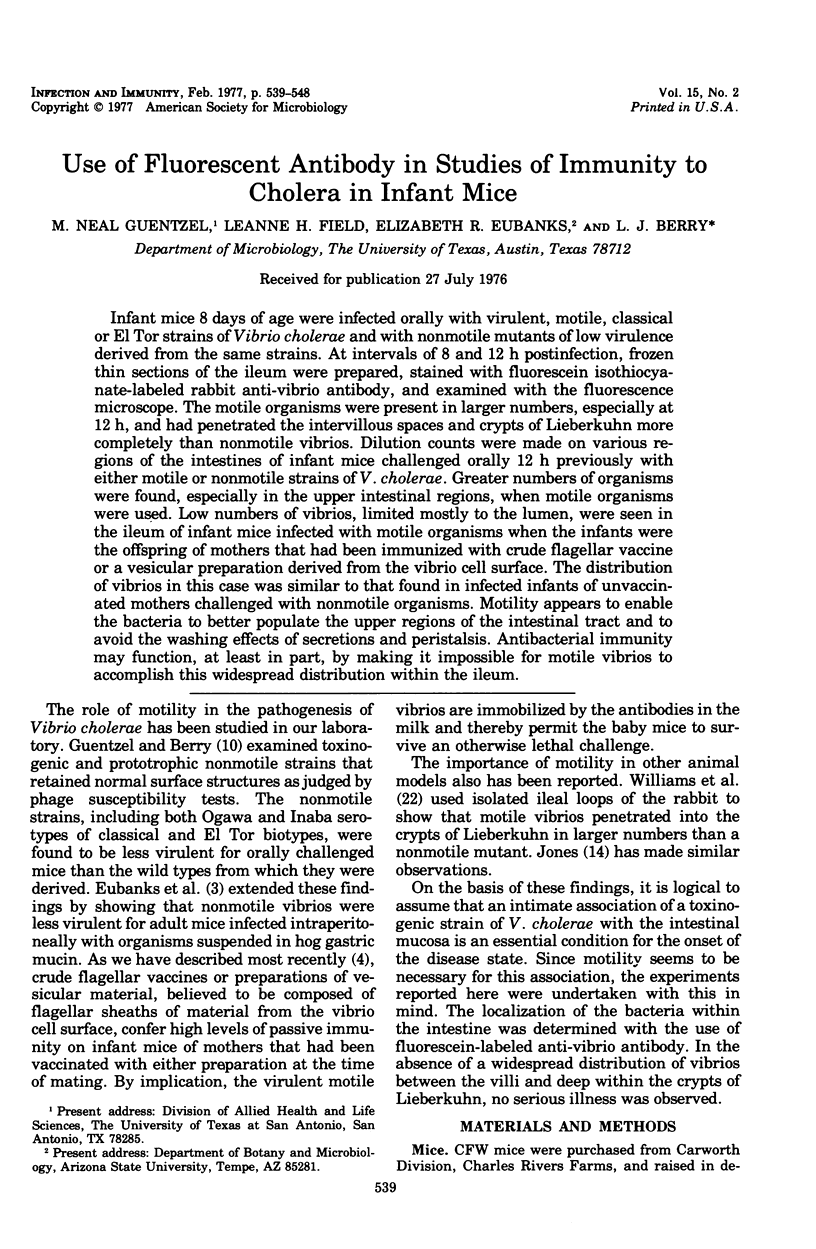
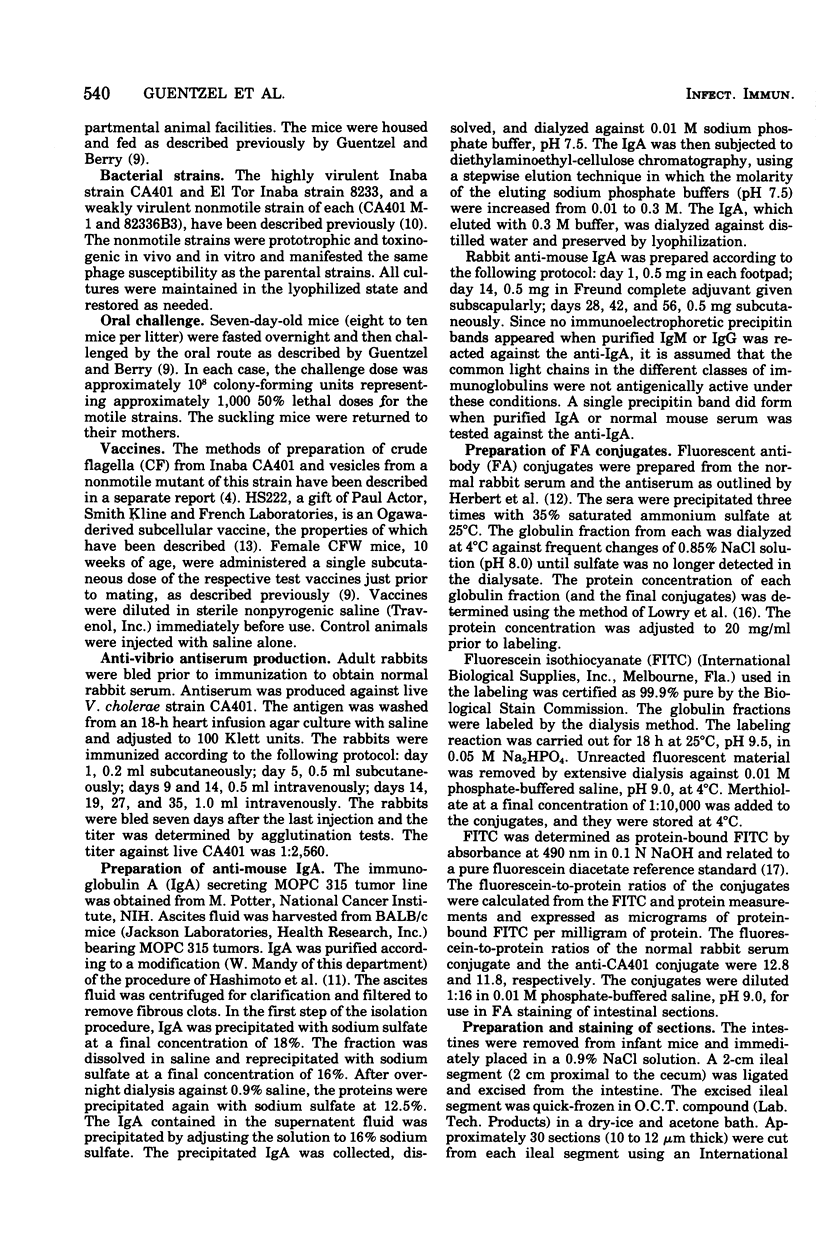
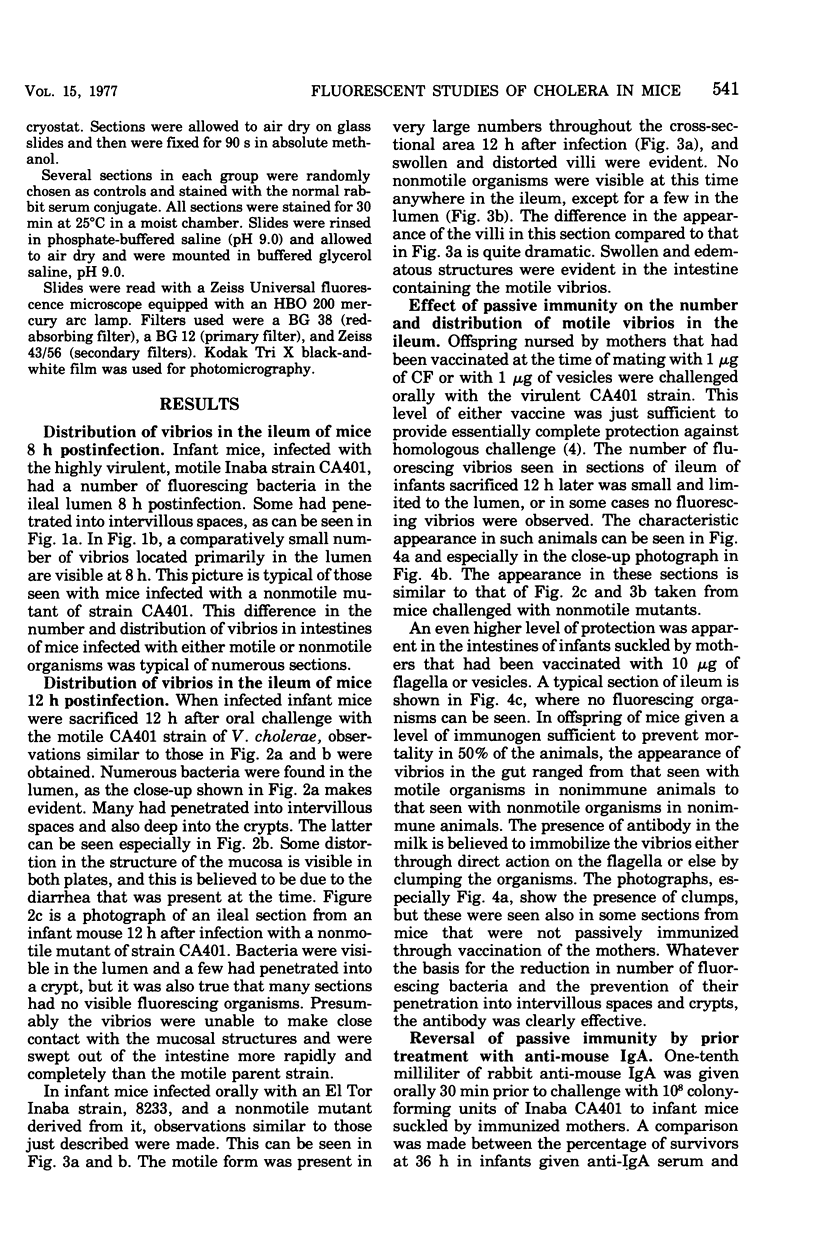
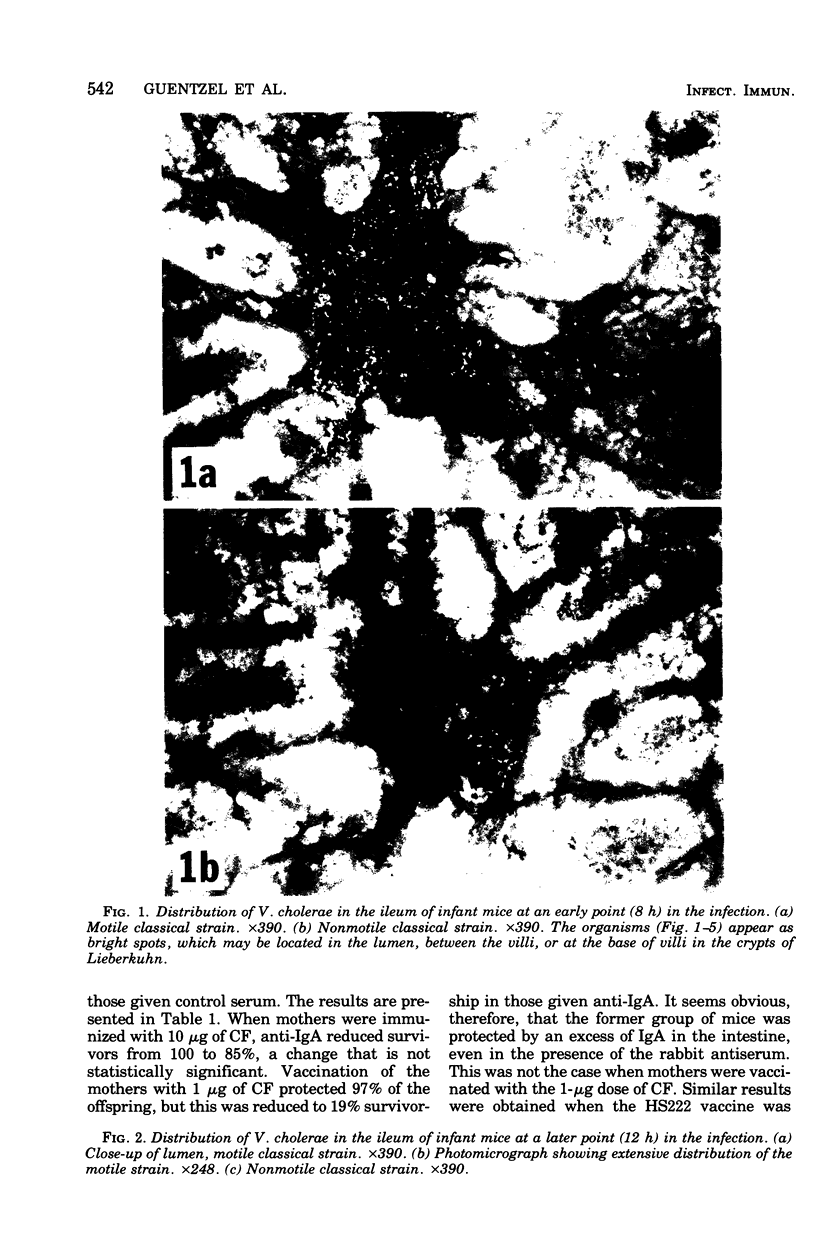
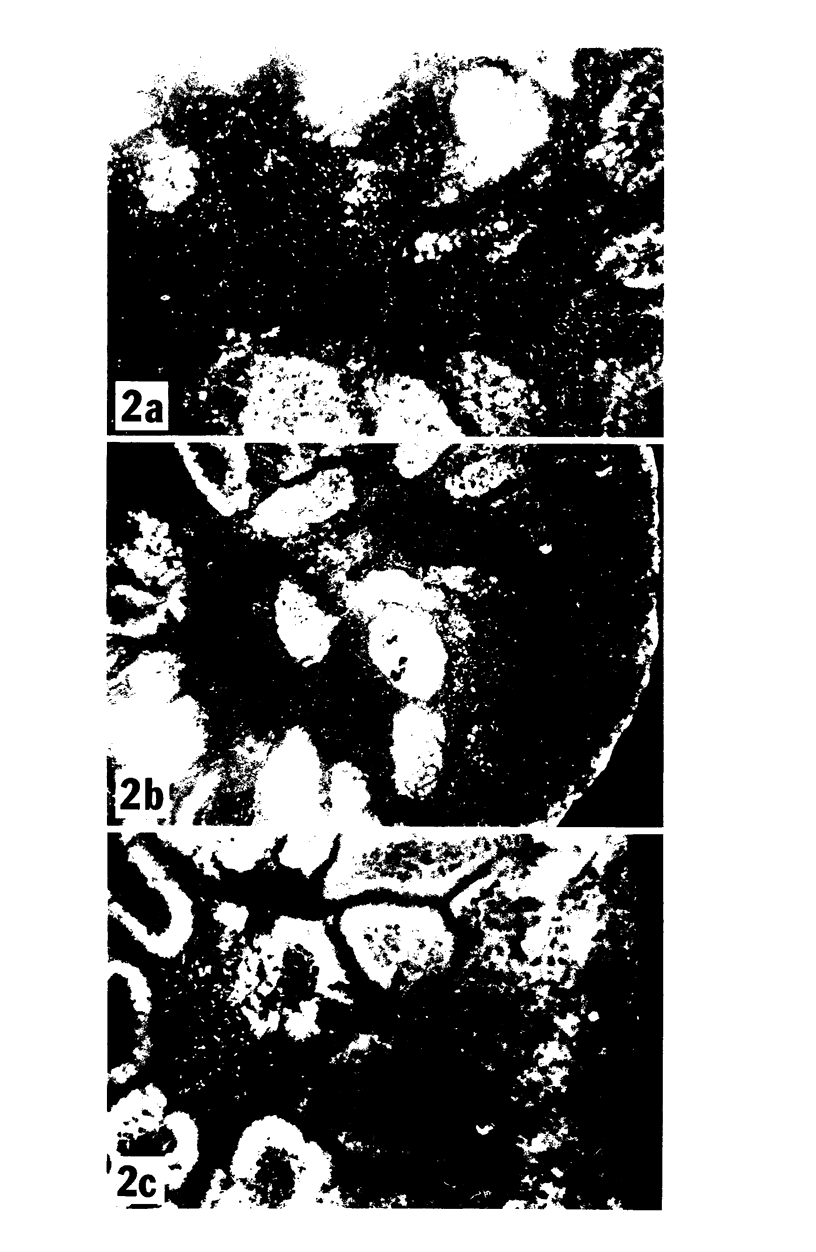
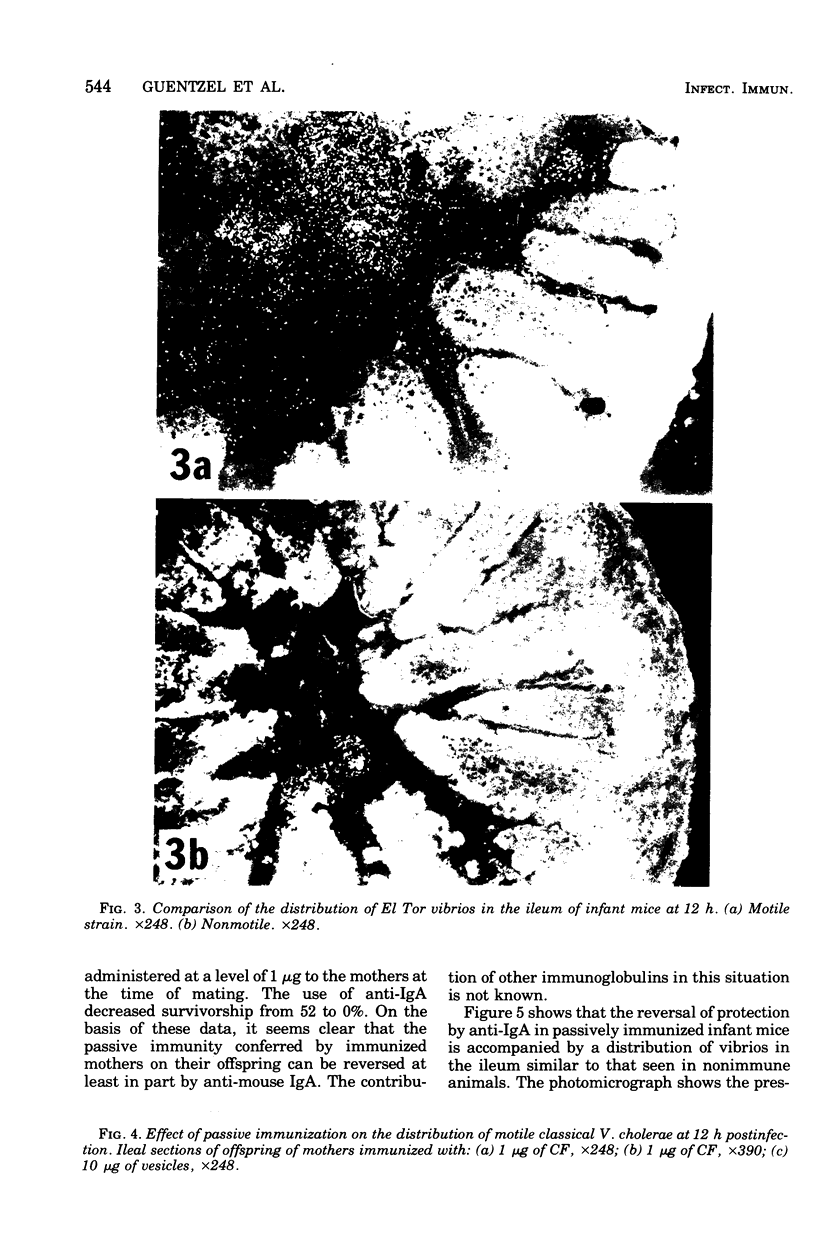
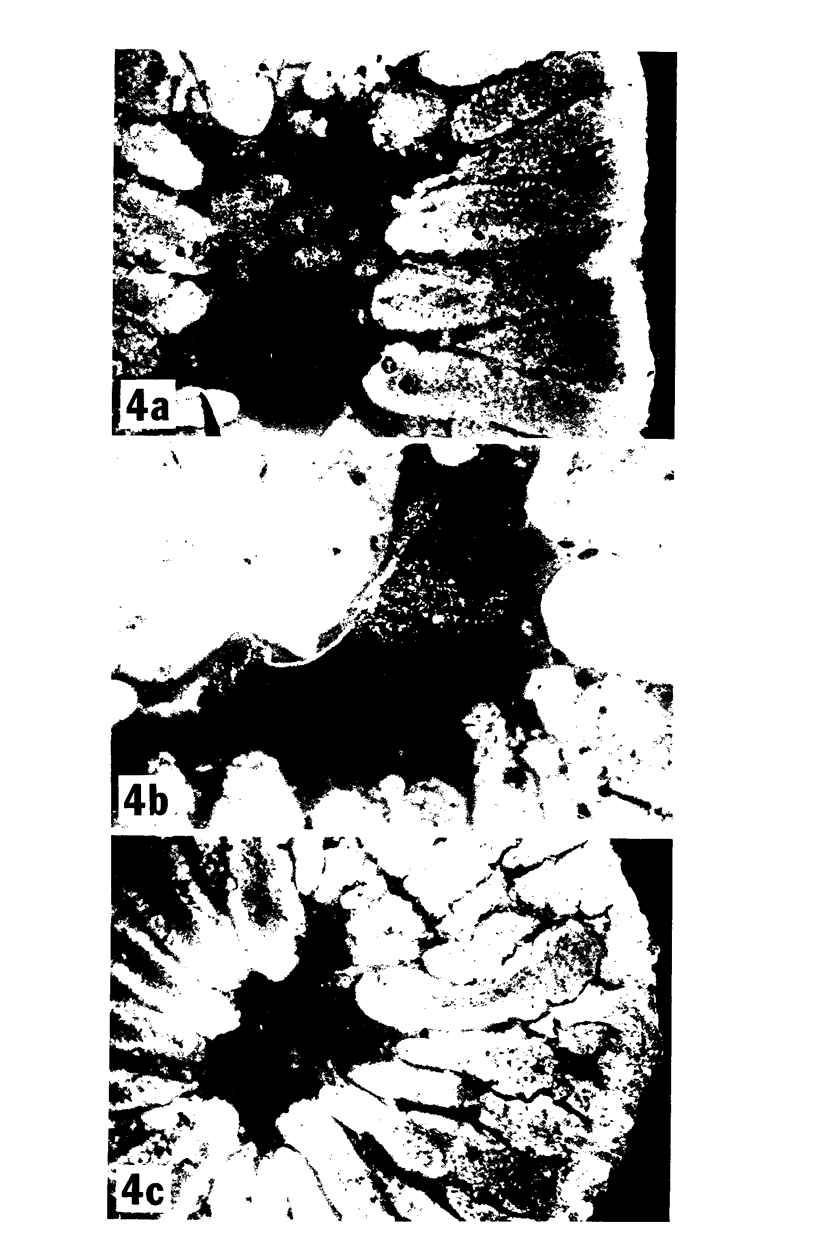
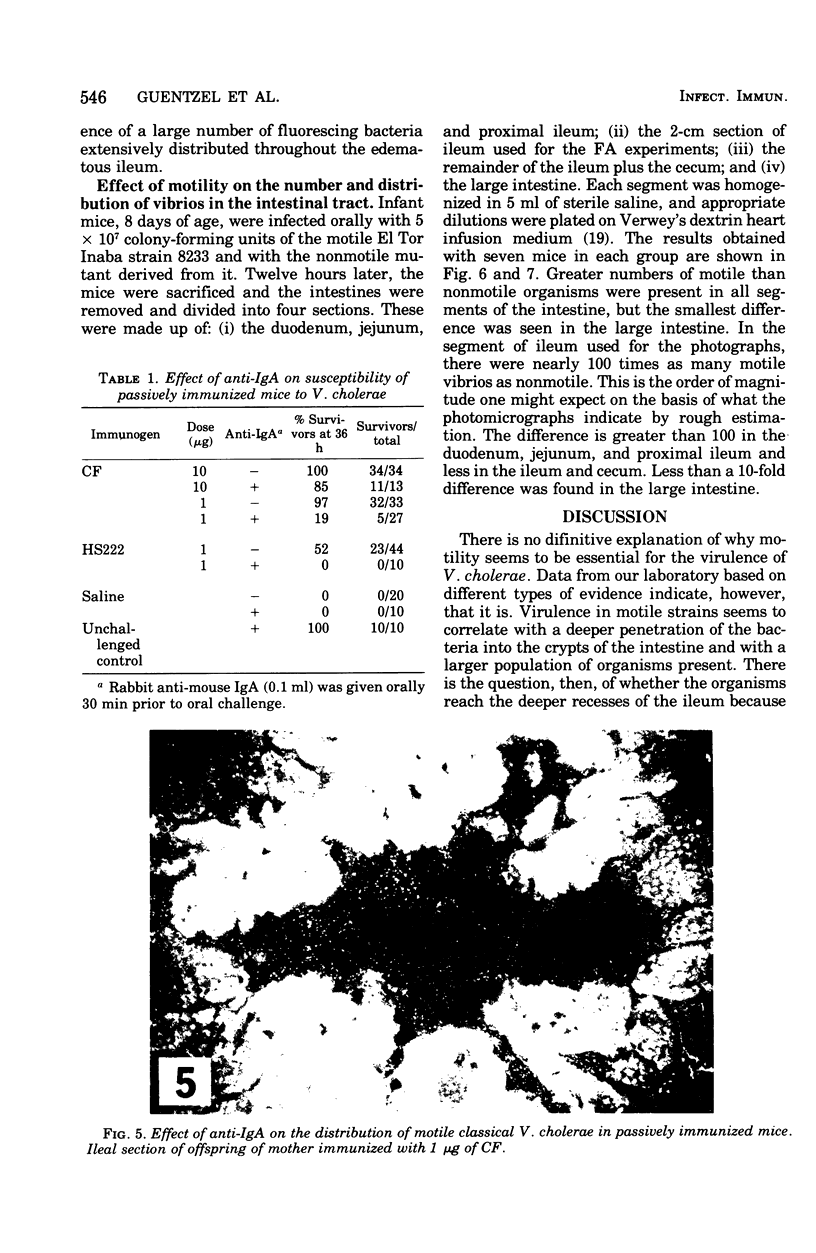
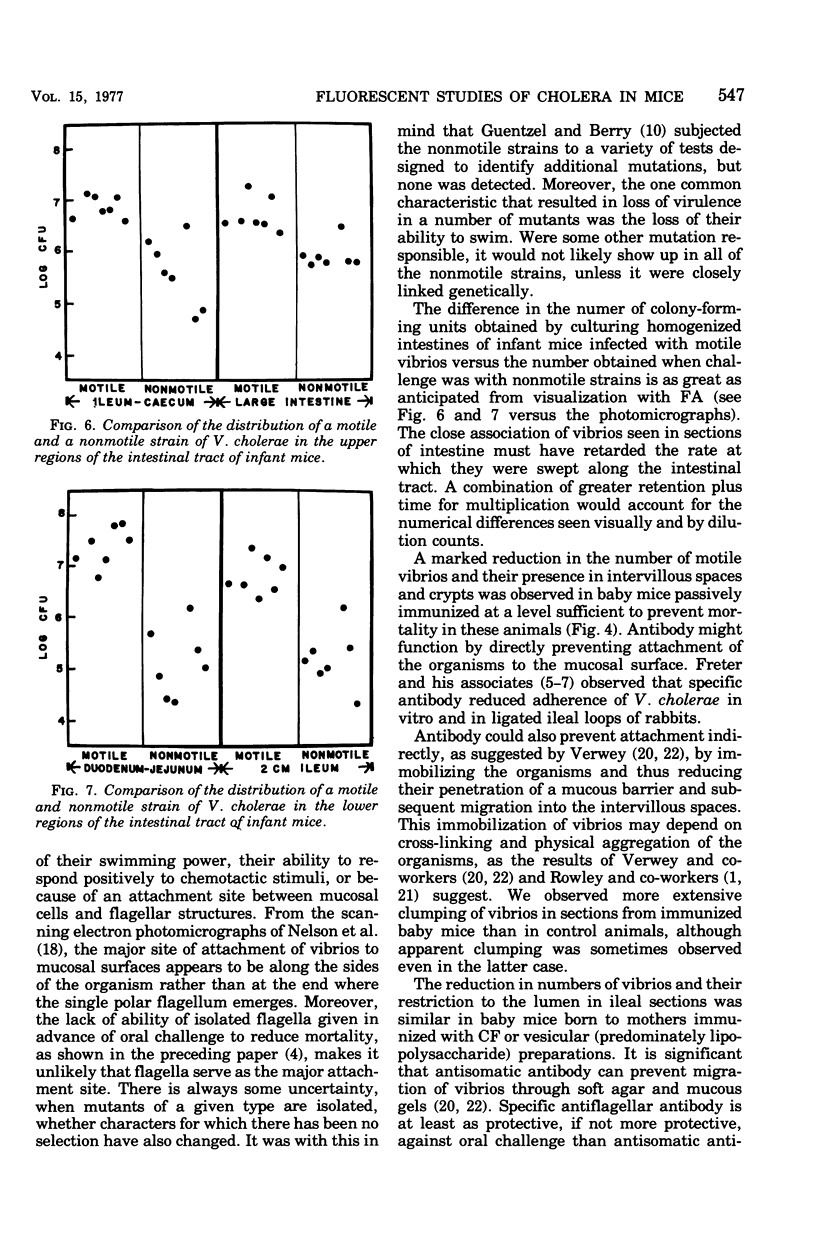
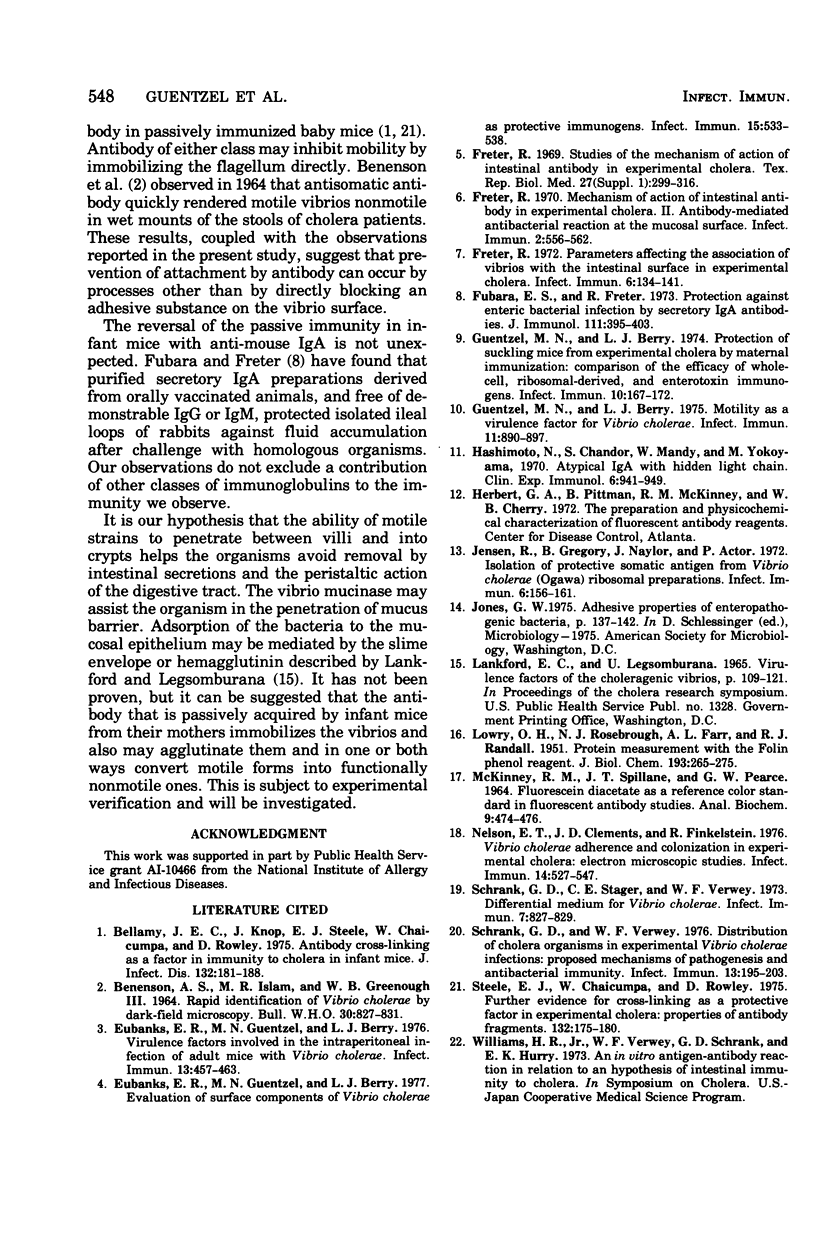
Images in this article
Selected References
These references are in PubMed. This may not be the complete list of references from this article.
- BENENSON A. S., ISLAM M. R., GREENOUGH W. B., 3rd RAPID IDENTIFICATION OF VIBRIO CHOLERAE BY DARKFIELD MICROSCOPY. Bull World Health Organ. 1964;30:827–831. [PMC free article] [PubMed] [Google Scholar]
- Bellamy J. E., Knop J., Steele E. J., Chaicumpa W., Rowley D. Antibody cross-linking as a factor in immunity to cholera in infant mice. J Infect Dis. 1975 Aug;132(2):181–188. doi: 10.1093/infdis/132.2.181. [DOI] [PubMed] [Google Scholar]
- Eubanks E. R., Guentzel M. N., Berry L. J. Evaluation of surface components of Vibrio cholerae as protective immunogens. Infect Immun. 1977 Feb;15(2):533–538. doi: 10.1128/iai.15.2.533-538.1977. [DOI] [PMC free article] [PubMed] [Google Scholar]
- Eubanks E. R., Guentzel M. N., Berry L. J. Virulence factors involved in the intraperitoneal infection of adult mice with Vibrio cholerae. Infect Immun. 1976 Feb;13(2):457–463. doi: 10.1128/iai.13.2.457-463.1976. [DOI] [PMC free article] [PubMed] [Google Scholar]
- Freter R. Mechanism of Action of Intestinal Antibody in Experimental Cholera II. Antibody-Mediated Antibacterial Reaction at the Mucosal Surface. Infect Immun. 1970 Nov;2(5):556–562. doi: 10.1128/iai.2.5.556-562.1970. [DOI] [PMC free article] [PubMed] [Google Scholar]
- Freter R. Parameters affecting the association of vibrios with the intestinal surface in experimental cholera. Infect Immun. 1972 Aug;6(2):134–141. doi: 10.1128/iai.6.2.134-141.1972. [DOI] [PMC free article] [PubMed] [Google Scholar]
- Fubara E. S., Freter R. Protection against enteric bacterial infection by secretory IgA antibodies. J Immunol. 1973 Aug;111(2):395–403. [PubMed] [Google Scholar]
- Guentzel M. N., Berry L. J. Motility as a virulence factor for Vibrio cholerae. Infect Immun. 1975 May;11(5):890–897. doi: 10.1128/iai.11.5.890-897.1975. [DOI] [PMC free article] [PubMed] [Google Scholar]
- Guentzel M. N., Berry L. J. Protection of suckling mice from experimental cholera by maternal immunization: comparison of the efficacy of whole-cell, ribosomal-derived, and enterotoxin immunogens. Infect Immun. 1974 Jul;10(1):167–172. doi: 10.1128/iai.10.1.167-172.1974. [DOI] [PMC free article] [PubMed] [Google Scholar]
- Hashimoto N., Chandor S., Mandy W., Yokoyama M. Atypical IgA with hidden light chain. Clin Exp Immunol. 1970 Jun;6(6):941–949. [PMC free article] [PubMed] [Google Scholar]
- Jensen R., Gregory B., Naylor J., Actor P. Isolation of protective somatic antigen from Vibrio cholerae (Ogawa) ribosomal preparations. Infect Immun. 1972 Aug;6(2):156–161. doi: 10.1128/iai.6.2.156-161.1972. [DOI] [PMC free article] [PubMed] [Google Scholar]
- LOWRY O. H., ROSEBROUGH N. J., FARR A. L., RANDALL R. J. Protein measurement with the Folin phenol reagent. J Biol Chem. 1951 Nov;193(1):265–275. [PubMed] [Google Scholar]
- MCKINNEY R. M., SPILLANE J. T., PEARCE G. W. FLUORESCEIN DIACETATE AS A REFERENCE COLOR STANDARD IN FLUORESCENT ANTIBODY STUDIES. Anal Biochem. 1964 Dec;9:474–476. doi: 10.1016/0003-2697(64)90208-8. [DOI] [PubMed] [Google Scholar]
- Nelson E. T., Clements J. D., Finkelstein R. A. Vibrio cholerae adherence and colonization in experimental cholera: electron microscopic studies. Infect Immun. 1976 Aug;14(2):527–547. doi: 10.1128/iai.14.2.527-547.1976. [DOI] [PMC free article] [PubMed] [Google Scholar]
- Schrank G. D., Stager C. E., Verwey W. F. Differential medium for Vibrio cholerae. Infect Immun. 1973 May;7(5):827–829. doi: 10.1128/iai.7.5.827-829.1973. [DOI] [PMC free article] [PubMed] [Google Scholar]
- Schrank G. D., Verwey W. F. Distribution of cholera organisms in experimental Vibrio cholerae infections: proposed mechanisms of pathogenesis and antibacterial immunity. Infect Immun. 1976 Jan;13(1):195–203. doi: 10.1128/iai.13.1.195-203.1976. [DOI] [PMC free article] [PubMed] [Google Scholar]
- Steele E. J., Chaicumpa W., Rowley D. Further evidence for cross-linking as a protective factor in experimental cholera: properties of antibody fragments. J Infect Dis. 1975 Aug;132(2):175–180. doi: 10.1093/infdis/132.2.175. [DOI] [PubMed] [Google Scholar]



